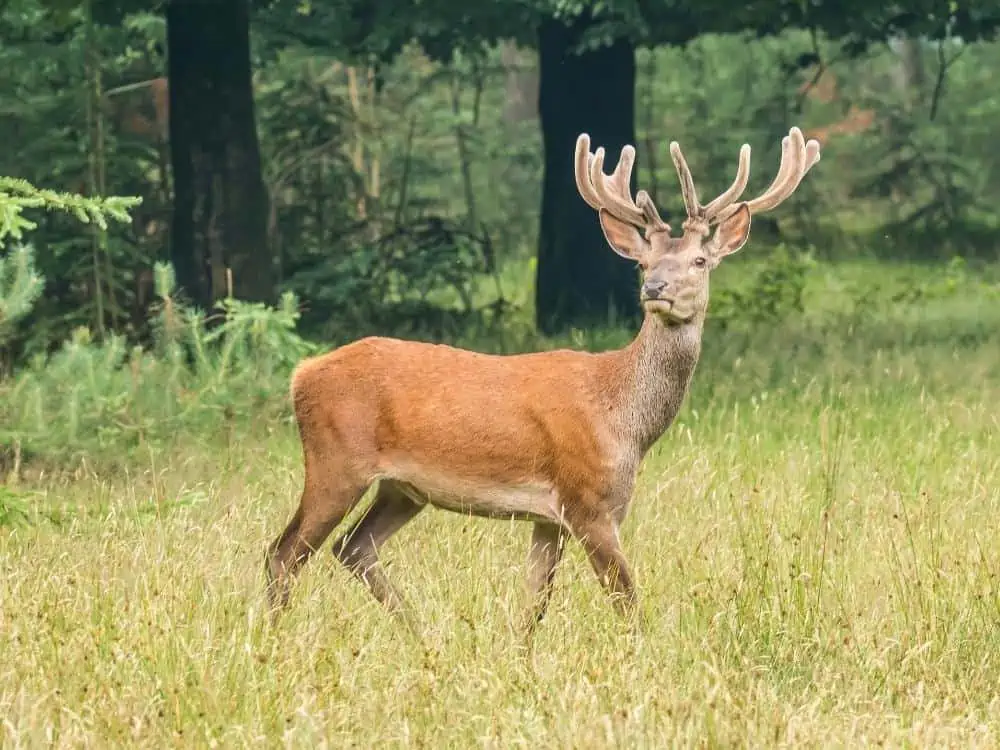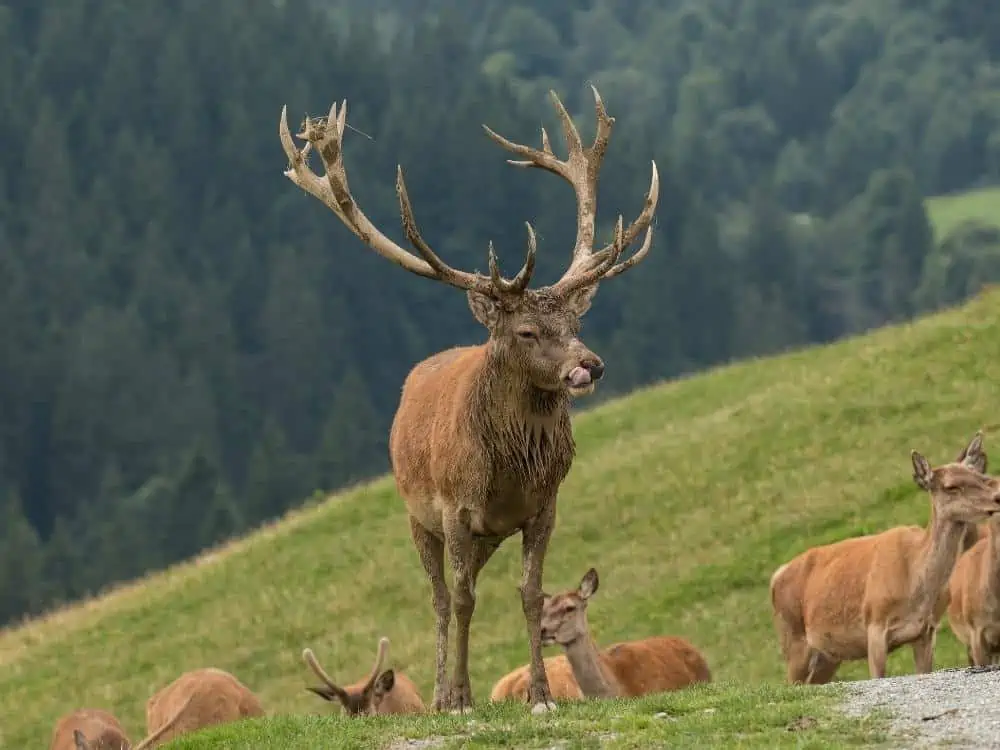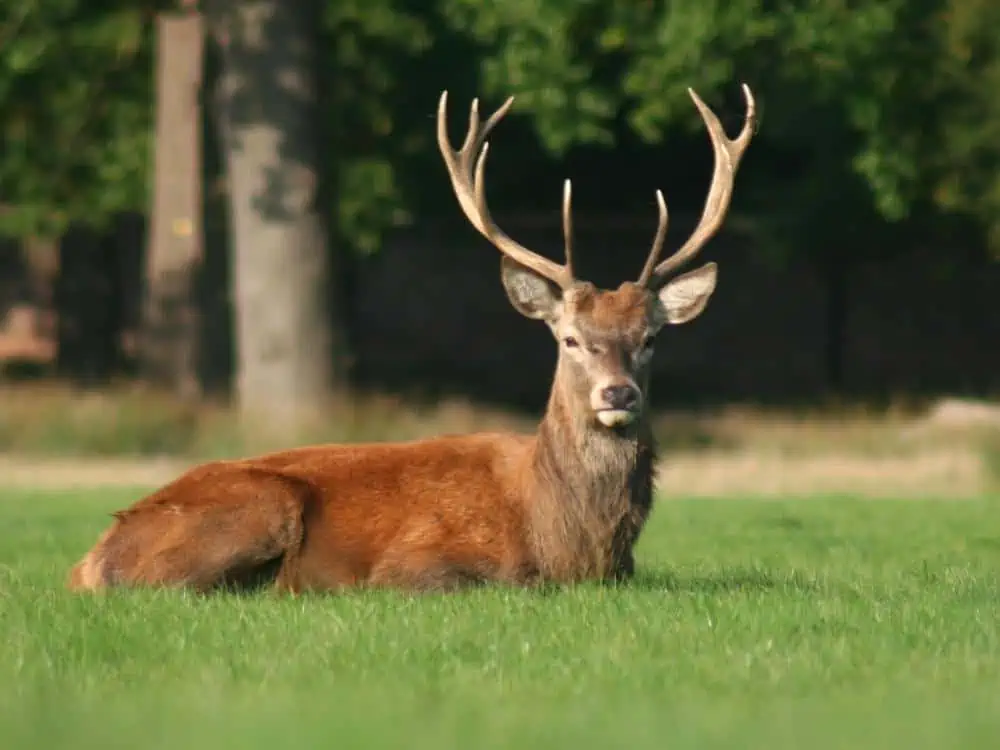Share the post "When Do Deer Lose Their Velvet in Texas?"
While it is true that most animals shed their hair, fur, or skin naturally to proceed with new growth, there are exceptions. In the case of deer shedding their velvet, it has nothing to do with further development and is a part of the transformation process for the animal.
If you are curious about how and when deer shed their velvet in Texas specifically, then look no further. The shedding season varies depending on where you live and what species of deer you’re observing.
In Texas, most species of deer go through their rutting season from late December through March. If you want to see the largest antler racks on any deer in Texas, January to April is your best bet.

What Is Deer Velvet?
Deer velvet is the soft, furry skin on a deer’s antlers. It grows from the pedicle, or base of the antler, and covers the whole antler. The purpose of deer velvet is to provide nutrients for the growing antler, but there are other benefits to this process.
Velvet Protects Deer Antlers
Velvet is a protective covering that protects the developing antler from injuries and infections until it has grown enough to be exposed to the elements.
Velvet Protects Deer Horns
Velvet also protects deer horns from abrasions and scratches. They rub against trees and bushes while navigating through thickets or underbrush, looking for food sources or mates during the breeding season.
Velvet Provides Nutrients for Antler Growth
The nutrient-rich velvet feeds blood vessels within growing antlers. These nutrients allow them to grow faster compared to other parts of their bodies.
How Do Deers Lose Their Velvet?
Deer lose their velvet, and then new antlers grow in its place. The process of losing and growing antlers is called “velvet shedding” and it happens every year.
As testosterone levels rise during the breeding season, the soft tissue at the base of each tine (branch) swells up into a “bump.” It contains blood vessels, nerves, and muscle fibers. The mass eventually hardens into bone as calcium deposits form within it.
Once antler growth is complete, velvet begins to die off as oxygen and nutrients are cut off from it by blood vessels that have grown into place around each time during development.
As this tissue dies off, it turns brown and falls away from the main shaft, leaving solid bone behind. Deer lose their velvet in several ways:
- Scratching against trees and bushes.
- Rubbing against other animals.
- Scraping against rocks.

What Time of the Year Do Deer Lose Their Velvet?
Deer shed their velvet every year and grow it back again. The timing of this event varies from one region to the next. In Texas, it’s usually late January or early February when deer start shedding their antlers. The time also varies from one species to another.
Here is a quick overview of how different deer shed their antlers through the year:
| Shedding antlers | Regrowing antlers | Losing velvet | |
| Mule Deer Bucks | February – March | May – June | 1 day |
| Elk Bucks | March – April | August – September | 3 weeks |
| White Tail Bucks | December – January | April | 24 – 48 hours |
Even though this is a natural cycle for deer, some things can cause them to lose their antlers early. These include:
- Poaching (hunting) of deer by humans.
- Extreme weather conditions. If the weather is mild and dry, deer will shed their velvet earlier than usual, but if it’s cold and wet, they’ll stay in velvet longer than expected.
- Physical damage from fighting with other males in the herd during mating season (rut).
- Infection of any kind affects the antlers’ growth process.
- Nutrition, If food is scarce or there is drought, bucks may delay shedding their velvet.
What Happens after Velvet Shedding?
After losing their velvet, deer go through several changes as they prepare for the mating season:
- They become more aggressive because they want to protect their territory.
- They begin to produce testosterone and other hormones that start the process of mating for that year’s breeding season.
- Their testosterone levels increase, which makes them more violent.
- Deer rub their antlers on everything from trees to fences. It helps draw out any remaining velvet tissue that might be attached.
- Deer can be weak from losing blood from the wound, which can take up to two weeks to heal completely.

Deer Velvet Uses
People use deer velvet for various health benefits. However, according to WebMD, there is no evidence supporting these uses.
Anti-Inflammatory Properties
Velvet antler contains a high concentration of amino acids, which help reduce inflammation and pain in joints and muscles. The amino acids also help improve athletic performance by increasing oxygen flow to the muscles.
Bone Marrow Strengthening
The nutrients found in deer velvet also help strengthen bone marrow, which helps fight against osteoporosis and other bone deficiencies associated with aging.
Cellular Regeneration
Deer velvet contains high amounts of growth factors that promote cellular regeneration and stimulate tissue repair in your body, including skin wounds and tendon tears.
They are an excellent alternative therapy for treating sports injuries like sprained ankles or torn ligaments in the knee or shoulder.
Asthma Relief
Many cultures use velvet to treat asthma symptoms. This is because it contains high amounts of vitamin C and bioflavonoids, which help improve lung function.
Increased Sexual Desire
Velvet contains testosterone. It helps men with low libido get back into the bedroom.
When Do Deer Lose Their Velvet in Texas: FAQs
Here are some of the most common FAQs about when deer lose their velvet.
Are antlers the same as horns?
Antlers are not horns. Deer shed antlers annually, while horns are permanent. Horns come from a bony core that is covered with keratin, the same protein that makes up hair and fingernails.
Antlers are made of bone covered with a smooth material called “velvet.” As the deer grows, it sheds its velvet each spring, and then the antlers grow rapidly after the rut season.
What is velvet made of?
Velvet is the soft, moist skin that covers antlers. It is made up of blood vessels, nerves, and connective tissue. Antlers grow from a permanent structure called a pedicle (or pedicel), which attaches to the skull.
As velvet increases, it pushes off the antlers, making them visible. The velvet dries out and falls off when the antler fully develops in late summer or early fall.
References
- https://www.fws.gov/story/eight-points-about-antlers
- https://www.fieldmuseum.org/blog/antlers-whats-their-function
- https://medlineplus.gov/druginfo/natural/808.html
Share the post "When Do Deer Lose Their Velvet in Texas?"
Christian Linden is a seasoned writer and contributor at Texas View, specializing in topics that resonate with the Texan community. With over a decade of experience in journalism, Christian brings a wealth of knowledge in local politics, culture, and lifestyle. He holds a Bachelor's degree in Communications from the University of Texas. When he's not writing, Christian enjoys spending weekends traveling across Texas with his family, exploring everything from bustling cities to serene landscapes.











